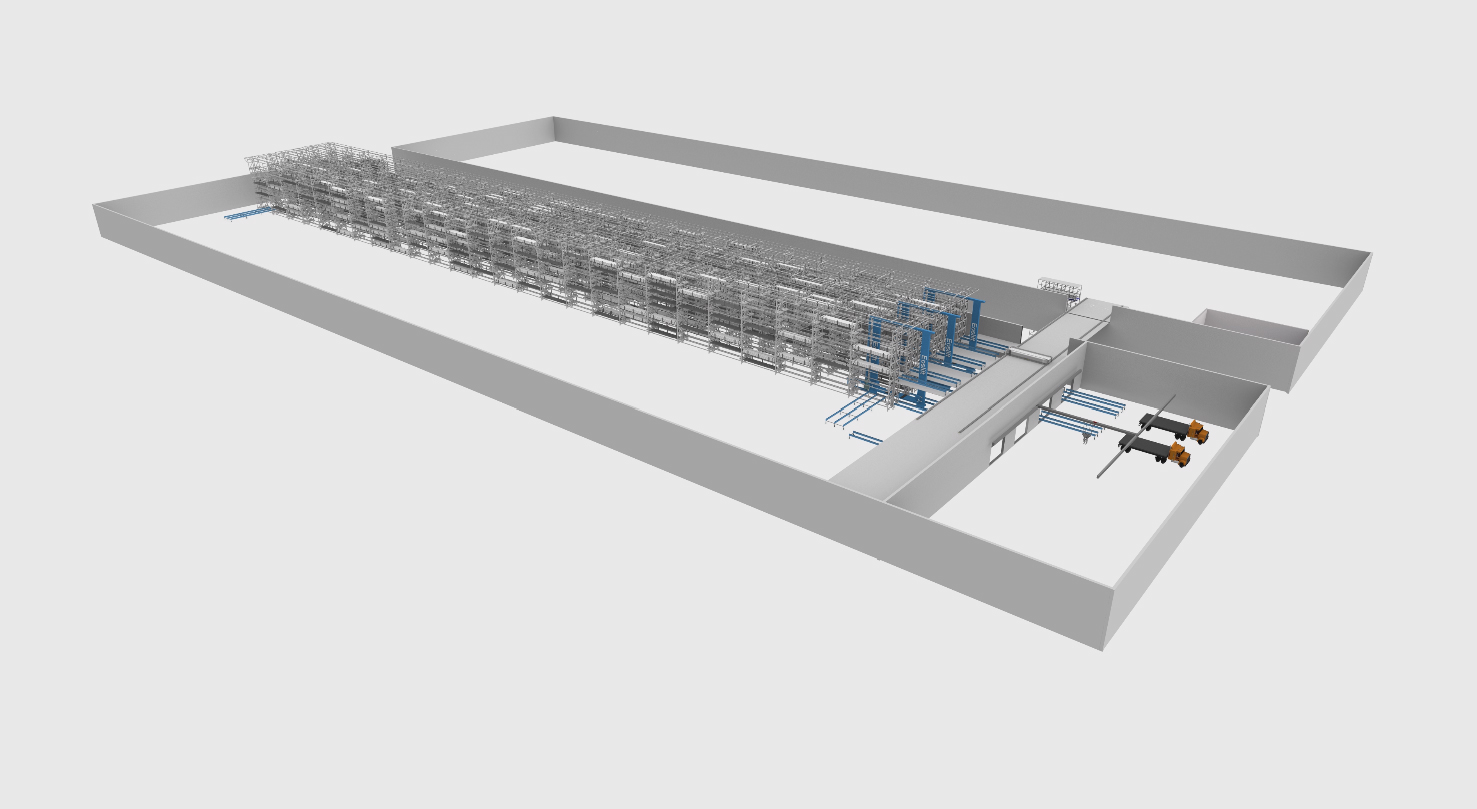Depth interpretation | Enotek Group using pull system to design the intelligent logistics solutions for various of factories and industries. (Part 3)
Oct 28,2022
Summary
The manufacturing industry is the main body of the national economy, the foundation for building and rejuvenating the country, and the foundation for strengthening the country. However, compared with the world's advanced level, China's manufacturing industry is still large but not strong, with obvious gaps in resource utilization efficiency, informatization, quality and efficiency. A number of action programs have been issued, including "Made in China 2025", "the 14th Five-Year Plan" and "the 2035 Vision and Goals", charting the course for the transformation, upgrading and leapfrog development of China's manufacturing industry.
The manufacturing industry is the main body of the national economy, the foundation for building and rejuvenating the country, and the foundation for strengthening the country. However, compared with the world's advanced level, China's manufacturing industry is still large but not strong, with obvious gaps in resource utilization efficiency, informatization, quality and efficiency. A number of action programs have been issued, including "Made in China 2025", "the 14th Five-Year Plan" and "the 2035 Vision and Goals", charting the course for the transformation, upgrading and leapfrog development of China's manufacturing industry.
Among them, the proposals on strengthening the supporting role of the circulation system, upgrading the modernization of industrial and supply chains, and building a modern logistics system have further clarified that smart logistics is an indispensable catalyst for the transformation of China's manufacturing industry from big to strong, and an important support for the transformation of old growth drivers and high-quality development in China. In the field of intelligent logistics, how can methodology, intelligent system, scheduling and equipment be deeply integrated with the manufacturing industry to achieve rapid development? How to design the logistics and warehousing system of modern intelligent manufacturing industry? Mr. Wu Tieli, Vice President of Enotek Group in October 13 "intelligent logistics design method and case sharing series" in the third lecture, focus on the above theory, on the production and application, in the way of data + examples, the noun definition and the actual production scene combined, so that the theory is more vivid and concrete, easy to understand and easy to practice.

Methodological part
Make to order
Make to order, MTO(MAKE TO ORDER), refers to the production according to the user's order, the user to the product requirements, through the form of an agreement or contract to confirm the product performance, quality, quantity and delivery time requirements, organized within a certain period of time design and manufacturing. Assembly production generally has both stock and order production.
Maket to stock
Maket to stock, MTS(MAKET TO STOCK), based on the analysis of previous production and sales volume, forecast of market demand, planned production, product inventory, flow production is generally stock production. It is usually standardized and produced in large batches. Due to large volume, the production line has a low replacement rate, and its production efficiency is relatively high.
Schedule production
Scheduling refers to the process of assigning production tasks to production resources. Under the premise of considering the capacity and equipment, arrange the production sequence of each production task, optimize the production sequence, optimize the selection of equipment, reduce the waiting time and production change time, and balance the production load of each machine and workers under the condition of a certain amount of materials. To optimizing production capacity, improving production efficiency and shortening production LT.
Production line
Production in the production line refers to the production line workers' optimal operation principle according to production scheduling plan and actual operation principle of the production line according to production scheduling plan in a certain period of time (it may be output per unit time, order scheduling rules within a unit time, influencing factors of production change rate within a unit time, material saving principle, balancing production load between machines and workers, etc.).
The effect of timeliness and volatility on production
In the production process, there is often a problem that the active SKUs of different periods are not equal to the average total amount of daily SKUs. Summarize the data of active SKUs, recombination degree, consumption, inventory cycle, understand the volatility of batch, vehicle, handling content, and accordingly analyze and summarize the rule, design inflection point, set classification, so as to balance the flow. It has good guiding significance for daily management and process design.
Key points of this chapter
MTO and MTS are not good or bad, depending on the market demand and business conditions, the two will be converted to each other according to the actual situation.
Production scheduling and production line production may not be consistent, usually production enterprises will be based on the production situation, cost and other factors combined.
In intelligent factories, it is not appropriate to take simple date and inventory cycle as production guidance. Instead, refined data statistics should be adopted to analyze the rule and deduce storage demand based on it.

Case Study
The case customer is the key enterprise of chemical building materials industry in our country. The products include pipe, profiles, plastic parts, stainless steel parts, large municipal pipelines, etc., with nine production bases and nearly 10,000 employees, the total area of factory area is more than 2000 mu, annual production capacity of 1 million tons.
With the rapid development of the profiles industry in our country, the customer's large-scale production factories located in Liu 'an, the original logistics system can not gradually meet the needs of production and storage. According to customer's production situation, materials size, In the way of tailoring, we provide industrial full-link intelligent logistics solutions from software systems to stackers, RGVS, conveyors, etc., and build the first automatic profile three-dimensional warehouse.

The innovation and advancement of the program
1, Through rigorous data analysis, design the most appropriate size and palletizing weight for the project.
2. Combined with the data of the field investigation, the pallet size required by the project was detailed and designed. On the basis of ensuring the bearing capacity, the external dimension should be compressed as far as possible to ensure no waste in the depositary area, which has good economy and cost advantage.
3. Demonstrate the feasibility of not using the cache repository through data, and replace it with the design of the cache bit of the transmission line, so as to realize the cache function required by the project, save costs and improve economic benefits on the whole.
4. According to data and field research, the business of the warehouse is subdivided into the following categories: order stock in, regular stock in, piece stock out, empty stock out, wall board out, order stock out, standing stock out, tail stock back and empty stock back. A detailed analysis of each category is carried out to calculate the system flow required by the automated system.
5. Set detailed functional area layout and equipment location refinement. The position layout of manual operation port, abnormal outlet and automatic operation port at the end of packing line and warehouse is fully considered.
6. In the case of packaging line and delivery cache, the functions of weighing module, camera (remote view when abnormal occurs) and code scanning (pallet code) are designed on each conveying line cache position. The system will automatically compare whether the weighing data is consistent with the number of code scanning, and will alarm if there is any inconsistency, so as to ensure the normalization and reliability of warehousing operation.
7, the delivery terminal is equipped with handheld PDA scanning code gun, the delivery of non-rectifier goods need manual scanning code, the system according to the number of scanning profiles automatically inventory settlement. When the goods are delivered in bulk, the system will automatically settle the inventory.
Smart logistics is an emerging field where the Internet of Things, big data, cloud computing, blockchain and other information technologies are deeply integrated with the modern logistics industry. It has significant advantages such as strong connectivity, wide integration, low economic cost, high operational efficiency, and good ecological benefits.
In recent years, the continuous rise of land prices and personnel costs has led to an increasing trend of total logistics costs year by year. With the advantages of space utilization, storage capacity and storage form, intelligent logistics can effectively improve logistics efficiency, reduce damage or loss of goods, reduce cargo selection error rate, improve warehousing management level, help enterprises reduce cost and efficiency, and break through the bottleneck of industry development. It has become an important cornerstone for accelerating the transformation and upgrading of the manufacturing industry and comprehensively improving the development quality and core competitiveness.
-
Previous:
Industry Solutions | Enotek Group’s Intelligent Logistics Solution Helps the E-Commerce Retail Industry to Improve the Efficiency of Warehouse Delivery and Realize Operation Automation
-
Next:
Product Introduction |Enotek WMS/WCS management system, give smart logistics the most powerful brain












